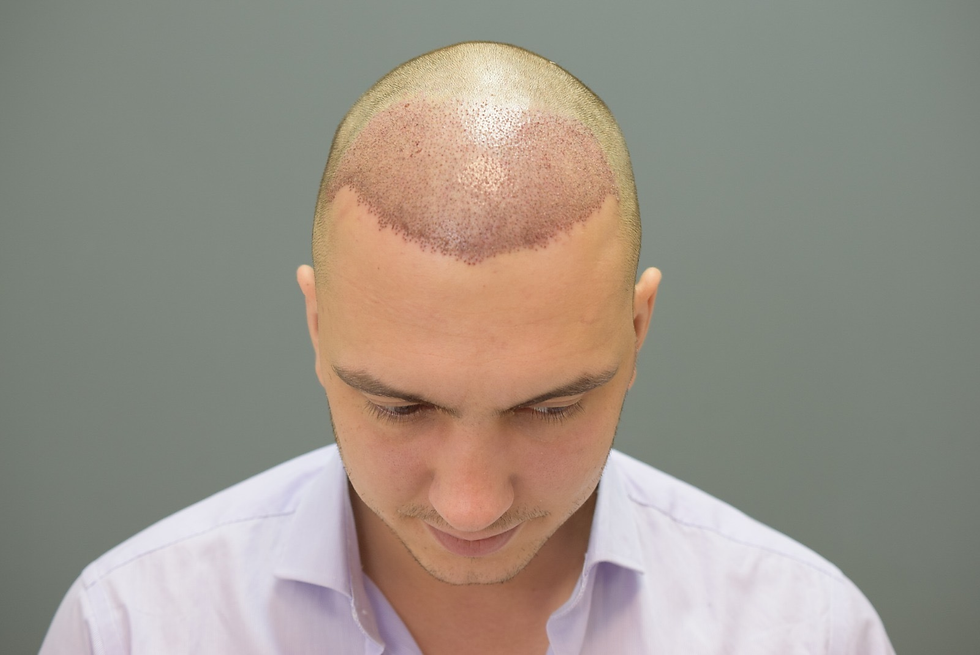Can New Hair Transplant Techniques Minimize Scalp Damage?
- Aestheticclinic Dubai
- 7 hours ago
- 2 min read
Hair loss has long been a concern for many individuals seeking a natural look and restored confidence. Recent innovations in the field of Hair Transplant in Dubai have introduced techniques designed to reduce trauma to the scalp. Unlike traditional methods, these new approaches focus on preserving the scalp’s integrity while ensuring hair follicles are carefully handled. Patients now benefit from a less invasive experience with minimized discomfort and improved overall scalp health.
Understanding Minimally Invasive Hair Transplants
Minimally invasive hair transplant techniques aim to reduce scalp damage by limiting unnecessary tissue manipulation. These methods emphasize precision and careful handling, ensuring the scalp experiences less irritation. By targeting specific areas with refined tools, these approaches allow for quicker recovery and reduced redness. Patients can enjoy a smoother post-treatment experience while still achieving natural-looking hair density. The focus is on efficiency, safety, and maintaining scalp vitality during the entire process.
Benefits of Reduced Scalp Trauma
Reducing scalp trauma provides multiple advantages for individuals seeking hair restoration. Less trauma can result in lower post-treatment inflammation, faster healing, and decreased risk of infection. Additionally, patients experience less discomfort, bruising, and swelling. By protecting the scalp, hair follicles have a better chance of thriving, and overall satisfaction increases. These benefits highlight why modern techniques are increasingly preferred over older, more invasive methods, offering a more comfortable experience.
Techniques That Protect the Scalp
Modern hair transplant methods prioritize scalp protection through innovative approaches. Techniques such as follicular unit extraction (FUE) utilize advanced tools to minimize incision size and reduce tissue disturbance. Careful placement of hair follicles ensures natural growth without unnecessary stress on the scalp. These methods are specifically designed to maintain the scalp’s structure and prevent visible scarring. Overall, these techniques represent a significant step forward in hair restoration with less physical impact on the scalp.
Factors Affecting Scalp Recovery
Several factors can influence how well the scalp recovers after a hair transplant. Patient age, scalp elasticity, and overall health play a critical role in healing. Maintaining proper scalp hygiene and following post-procedure care instructions also accelerates recovery. Nutritional support and avoiding harsh chemical products contribute to healthier outcomes. By understanding these factors, patients can make informed decisions and adopt practices that further minimize scalp stress and enhance hair growth.
Key Advantages of Modern Techniques
Modern hair transplant approaches offer unique benefits that older methods cannot match:
Minimal scarring and reduced tissue trauma
Faster recovery and less discomfort
Enhanced precision for natural hair growth
Reduced risk of infection or complications
Preservation of scalp integrity for long-term health
Final Thoughts
Innovative hair transplant methods have revolutionized scalp care, reducing trauma while supporting healthy hair growth. Patients seeking Hair Transplant in Dubai now have access to techniques that ensure minimal disruption to the scalp, making the experience more comfortable and effective. With reduced risks, faster recovery, and better overall outcomes, these advancements mark a significant improvement in hair restoration practices. For those exploring reliable and patient-focused solutions, Dynamic Life Clinics remains a trusted choice.




Comments